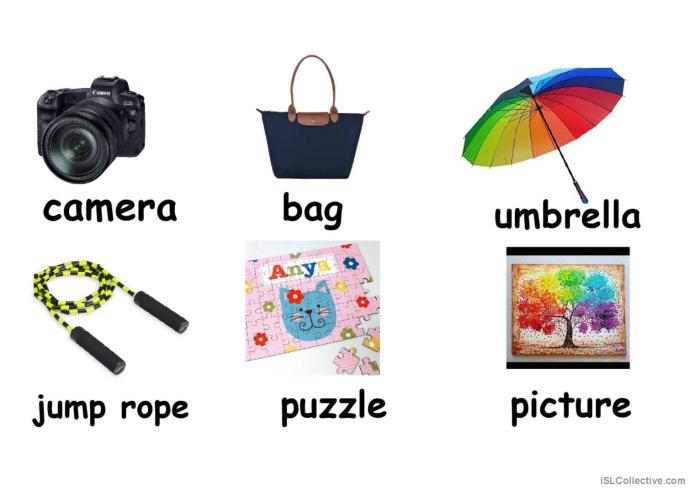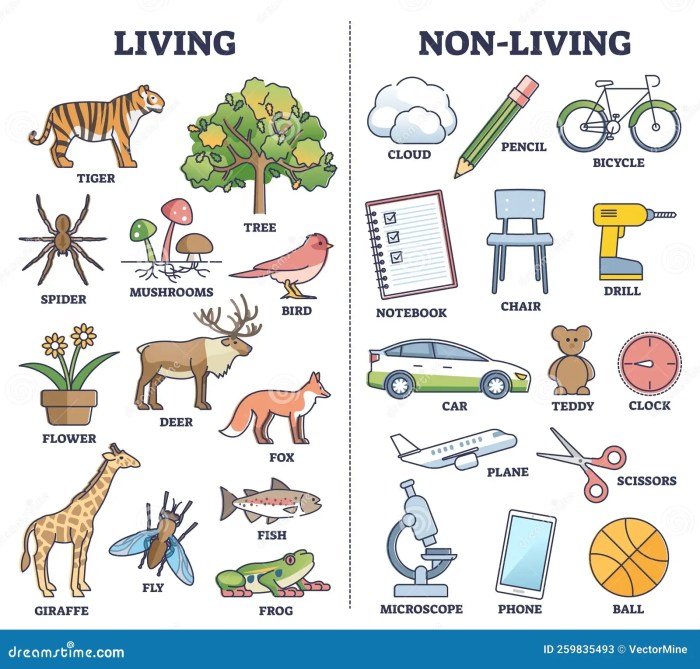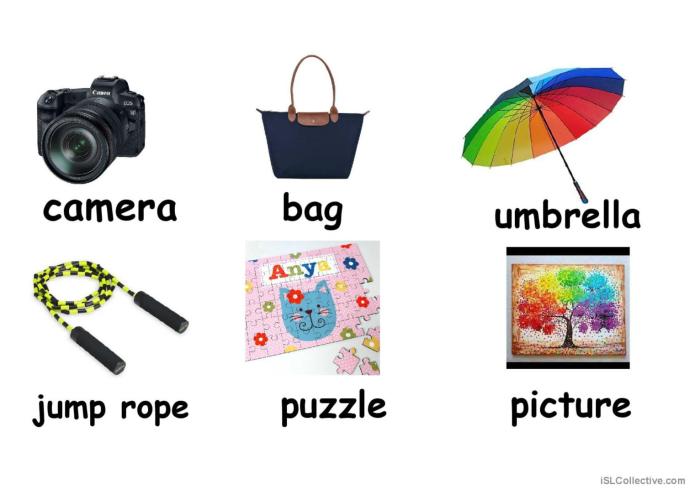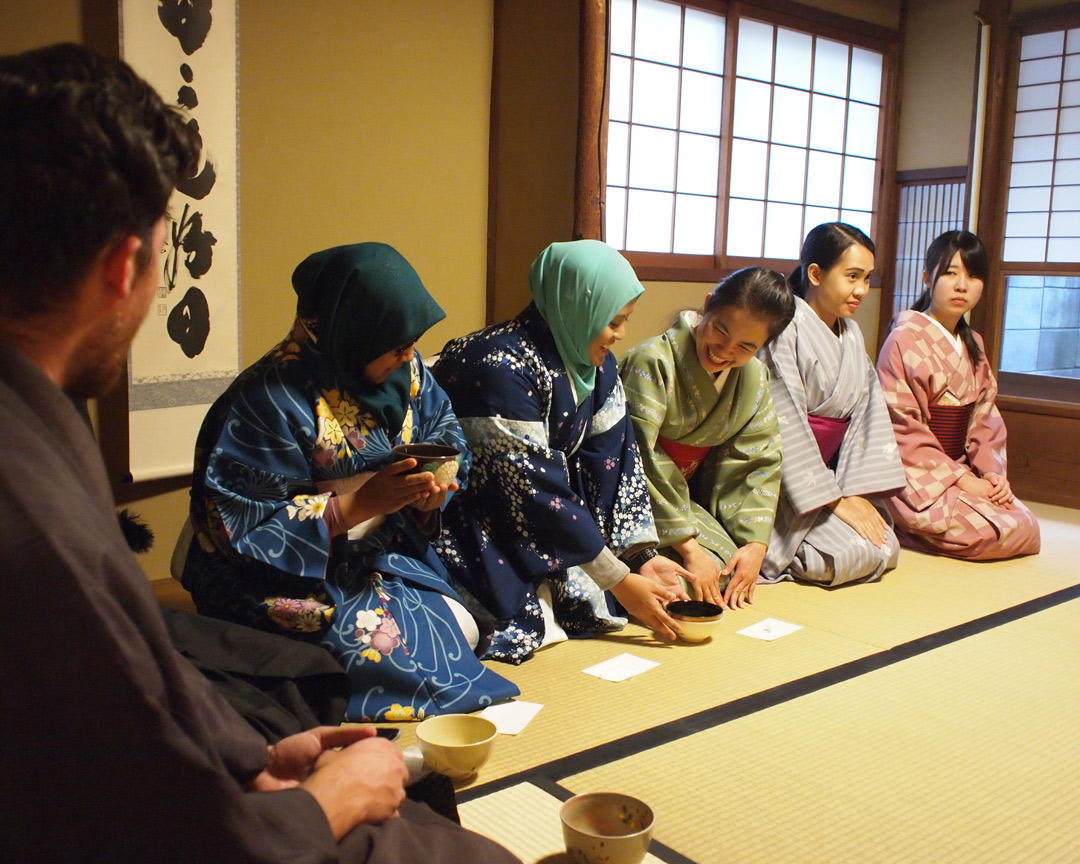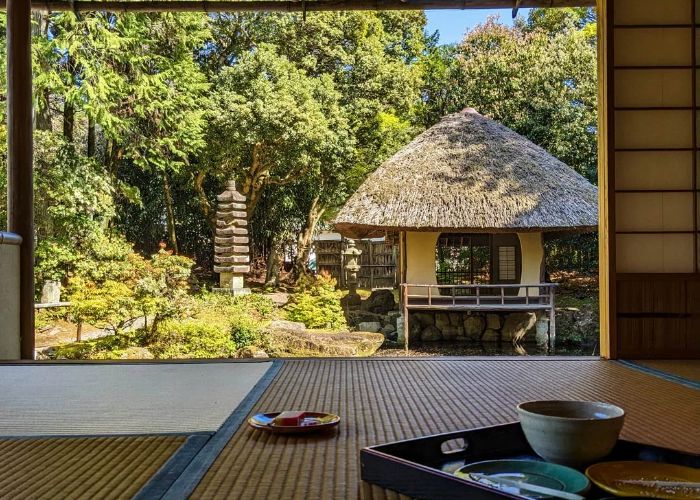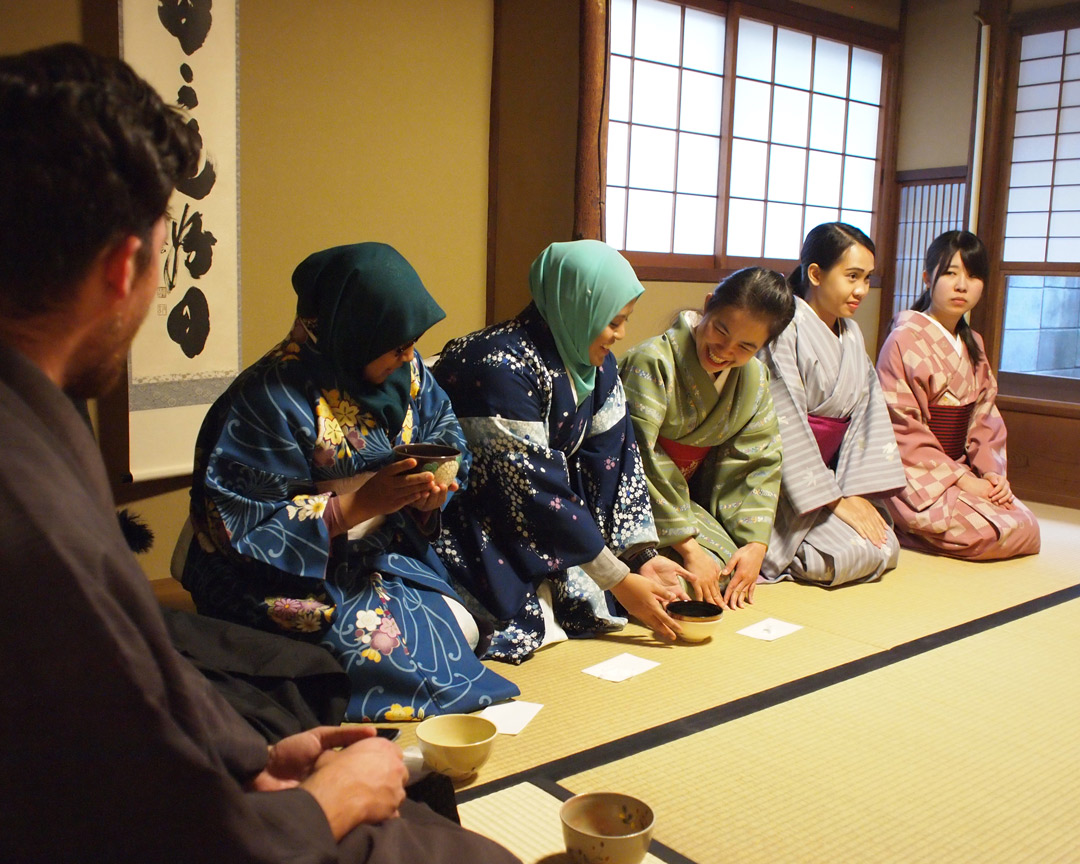Top things to do in Kyoto with kids! Kyoto, a city steeped in history and culture, offers a wealth of experiences perfect for families. From ancient temples to interactive museums, and delicious food to tranquil parks, this guide will help you plan the ultimate family adventure. Discover the best spots to explore with your little ones, ensuring a memorable trip for everyone.
This comprehensive guide will explore Kyoto’s best attractions, tailored for different age groups. We’ll cover kid-friendly temples, interactive museums, traditional crafts, culinary delights, and beautiful parks. Whether you’re looking for historical insights or fun activities, Kyoto has something for every family.
Introduction to Kyoto for Families
Kyoto, the ancient capital of Japan, is a treasure trove of history and culture, brimming with captivating sights and experiences for families. From serene temples to vibrant markets, Kyoto offers a unique blend of tradition and modern attractions that will engage children of all ages. The city’s rich past and meticulously preserved heritage provide a fascinating lens through which to explore Japanese history and artistry.
This makes Kyoto an ideal destination for families seeking an enriching and unforgettable adventure.Kyoto’s historical significance, dating back centuries, makes it a captivating destination for children. Imagine strolling through the serene gardens of a temple, learning about the lives of emperors and samurai, or discovering intricate art and crafts. This immersive experience can spark a child’s imagination and curiosity about different cultures and eras.Kyoto offers a variety of attractions that cater to different age groups.
Children can marvel at the colorful lanterns adorning the Gion district, or get involved in interactive experiences at museums and cultural centers. Families can enjoy leisurely strolls through traditional gardens, or embark on exciting adventures in amusement parks. The city has something to offer every member of the family, fostering shared experiences and creating lasting memories.
Top 5 Must-See Spots for Families
Kyoto offers a wealth of attractions that appeal to families. These sites offer a blend of historical significance, cultural immersion, and engaging activities, ensuring a memorable experience for everyone.
- Fushimi Inari-taisha Shrine: This iconic shrine, renowned for its thousands of vibrant red torii gates winding up the mountainside, is a captivating sight for all ages. The unique architecture and the sheer scale of the gates are sure to spark awe and wonder in children. The journey through the tunnels of red gates provides a visually stunning and memorable experience for families.
- Arashiyama Bamboo Grove: The serene and enchanting bamboo grove is a perfect spot for a peaceful stroll. The rustling of the bamboo creates a unique atmosphere, ideal for relaxation and enjoying the beauty of nature. The towering bamboo stalks create a picturesque backdrop for photos and storytelling, making it a favourite for families.
- Kyoto Imperial Palace: This former imperial residence showcases a glimpse into Japan’s imperial history. The palace grounds offer a peaceful retreat with beautiful gardens, and allow for learning about the traditions of the imperial family. The palace grounds are expansive and suitable for children to explore and enjoy the different parts of the gardens.
- Gion District: The historic Gion district, known for its geishas and traditional wooden houses, provides a captivating glimpse into Kyoto’s rich culture. The unique architecture and atmosphere can spark children’s imagination and provide an opportunity to learn about the daily life of people in this district. Families can enjoy exploring the streets, observing the locals, and perhaps even spotting a traditional geiko.
- Nijo Castle: This impressive castle, with its intricate architecture and beautifully maintained gardens, offers a glimpse into Japan’s history and architecture. The detailed craftsmanship of the castle’s structure is a learning experience for children of all ages. Families can explore the different sections of the castle, including the beautifully designed gardens, to understand more about the castle and its history.
Suitability of Locations by Age Group
This table provides a comparison of the suitability of different locations based on age group.
| Location | Toddlers | Preschoolers | School-Aged Children |
|---|---|---|---|
| Fushimi Inari-taisha Shrine | Might find it overwhelming; short visits recommended. | Can enjoy the vibrant colors and winding paths. | Great for exploring the vastness and learning about the shrine’s history. |
| Arashiyama Bamboo Grove | Enjoy the peaceful atmosphere and gentle walk. | Perfect for exploring the grove and taking pictures. | Appreciate the unique scenery and learn about the bamboo’s significance. |
| Kyoto Imperial Palace | Enjoy the open space and gardens. | Engage with the history and architecture. | Explore the grounds and learn about the imperial family. |
| Gion District | Observe the unique atmosphere and architecture. | Enjoy the traditional atmosphere and explore the streets. | Learn about the history and culture of the district. |
| Nijo Castle | Might be overwhelmed; short visits recommended. | Enjoy the architecture and the castle’s gardens. | Appreciate the intricate details and learn about the castle’s history. |
Kid-Friendly Temples and Gardens

Kyoto’s temples offer a unique blend of history and beauty, perfect for exploring with children. These sacred spaces, often beautifully landscaped, provide a fascinating glimpse into Japan’s rich past. Beyond the traditional architecture, many temples welcome families with engaging activities and stories, making learning about Japanese culture fun and memorable for children.Kyoto is home to several temples that are specifically designed to be engaging and enjoyable for families with children.
These temples are known for their child-friendly layouts, interactive elements, and captivating stories, transforming the learning experience into a memorable journey.
Kid-Friendly Temple Design
These temples often have spacious courtyards, beautifully crafted gardens, and areas designed to encourage exploration and discovery. The serene atmosphere and intricate details of the temples can be a source of wonder for children, stimulating their imagination and fostering a deeper appreciation for the artistry and craftsmanship of Japan.
Kyoto is a fantastic city for families with kids, offering tons of fun activities. Before you pack your bags for a trip to Japan, it’s wise to check out some crucial info about traveling to Thailand, like visa requirements and local customs. things to know before traveling to thailand will give you a good overview. Luckily, Kyoto has amazing temples, gardens, and even a unique, kid-friendly zoo, perfect for creating lasting memories.
Three Temples Ideal for Families
Three temples in Kyoto stand out for their child-friendly features and educational opportunities.
- Kiyomizu-dera Temple: This iconic temple boasts a stunning wooden stage overlooking the city. Its history dates back to the 8th century, making it a significant site in Japanese religious and cultural heritage. The temple’s architecture and serene atmosphere create a wonderful environment for children to appreciate the beauty of traditional Japanese design. The wooden stage’s impressive size and intricate carvings are captivating for young minds, inspiring awe and wonder.
- Fushimi Inari-taisha Shrine: Famous for its thousands of vibrant red torii gates winding up the mountainside, this shrine is a spectacular sight. The long, winding paths and varied landscape offer plenty of opportunities for children to explore and discover. This shrine is deeply connected to the Shinto religion, where the spirits of nature are revered. The shrine’s emphasis on nature’s beauty, combined with the unique experience of walking through the red torii gates, provides a memorable learning experience for families.
The sheer number of gates and the stories behind them can spark curiosity and encourage questions.
- Kennin-ji Temple: Known for its serene gardens and the Zen Buddhist tradition, this temple is a place for quiet reflection and contemplation. While not as overtly child-focused as other temples, the serene atmosphere and beautiful gardens can be very engaging for children. Its history as a significant center of Zen Buddhism offers a glimpse into this important aspect of Japanese culture.
The temple grounds themselves are a source of learning and exploration, promoting an appreciation for nature and tranquility.
Engaging Stories and Legends
Many temples and shrines in Kyoto hold fascinating stories and legends. These stories, often passed down through generations, bring the temples to life and help children understand the cultural significance of the sites.
- Kiyomizu-dera Temple: Legend says the temple’s construction was aided by a divine presence, making it a sacred site. The temple’s location, with its panoramic views, adds to the sense of wonder and reverence.
- Fushimi Inari-taisha Shrine: The many torii gates are associated with the god Inari, the god of rice and prosperity. Children can be encouraged to imagine the journey of the spirits as they pass through each gate, connecting the physical journey to the spiritual realm.
- Kennin-ji Temple: The temple’s Zen gardens often feature stories about achieving enlightenment and finding inner peace. These stories can be discussed with children in an age-appropriate way, introducing them to the concept of mindfulness and the importance of serenity.
Temple Activities for Kids
| Temple | Guided Tours | Interactive Exhibits | Kid-Friendly Programs |
|---|---|---|---|
| Kiyomizu-dera | Guided tours focusing on temple history and architecture. | Interactive displays about the temple’s history. | Special workshops on Japanese calligraphy or origami. |
| Fushimi Inari-taisha | Guided walks through the torii gate network, highlighting the legends and stories. | Displays about the deity Inari and the shrine’s significance. | Guided nature walks and story-telling sessions. |
| Kennin-ji | Guided tours focusing on the temple’s Zen Buddhist heritage. | Displays about the history and philosophy of Zen Buddhism. | Workshops on traditional Japanese arts and crafts. |
Respecting Cultural Context
It’s crucial to emphasize respectful behavior while visiting temples with children. Encourage them to remain quiet, to remove their shoes before entering designated areas, and to dress modestly. Explain the significance of bowing and showing respect for the sacred space. This demonstrates appreciation for the culture and tradition, creating a positive experience for everyone.
Interactive Museums and Educational Experiences
Kyoto offers a wealth of interactive museums perfect for families with children. These destinations provide engaging experiences that go beyond passive observation, fostering a deeper understanding and appreciation of Japanese culture. From hands-on exhibits to immersive environments, these museums transform learning into a fun and memorable adventure for kids of all ages.
Interactive Museums in Kyoto
Kyoto boasts several interactive museums designed to captivate children and spark their curiosity about Japanese history, art, and culture. These museums provide a dynamic learning environment that goes beyond typical museum visits, encouraging active participation and exploration.
- Kyoto National Museum: This museum houses a significant collection of Japanese art and artifacts spanning centuries. While not solely interactive, its impressive exhibits often include interactive displays and demonstrations. The museum’s layout is well-organized, allowing children to follow their interests, and the knowledgeable staff is helpful in guiding their explorations. The museum provides audio guides in multiple languages and special programs for children.
Kyoto is amazing for families! Kids will love exploring the temples and gardens, and there are tons of fun activities. Thinking about a change of pace? Check out the death valley national park free festival for a unique experience! The stunning landscapes and events might just inspire some new adventures back in Kyoto with the little ones.
Visiting Kiyomizu-dera Temple and the Golden Pavilion are always high on the list of top things to do.
The collection includes exquisite examples of traditional Japanese paintings, ceramics, and sculptures, allowing children to witness the evolution of art and craftsmanship. This exposure fosters an understanding of artistic traditions and cultural continuity.
- Kyoto Municipal Museum of History: This museum is dedicated to the history of Kyoto and its people. It offers interactive displays, often involving historical artifacts and tools. Children can participate in demonstrations or try out traditional crafts, experiencing firsthand the lives and traditions of past generations. The museum’s exhibits are arranged chronologically, allowing for a clear understanding of the city’s historical development. The interactive elements allow children to actively connect with the past, fostering a sense of place and cultural understanding.
- Gion Corner: This museum provides an interactive glimpse into the traditional culture of Gion. Children can explore traditional crafts, such as calligraphy, origami, or pottery. The museum showcases the everyday lives of the people in Gion, offering hands-on experiences and fostering appreciation for the region’s rich history and unique way of life. The museum’s immersive atmosphere immerses visitors in the beauty of traditional Japanese crafts, fostering respect for artistic traditions.
- Kyoto City Science Museum: This museum features a diverse range of exhibits focusing on science and technology. The exhibits are designed to engage children through interactive displays, experiments, and demonstrations. The museum often hosts special events and workshops, providing a dynamic learning environment that caters to different interests and ages. Children can learn about various scientific concepts in a hands-on way, promoting scientific inquiry and problem-solving skills.
- Kyoto Aquarium: This aquarium showcases a wide variety of aquatic life, from colorful fish to larger marine creatures. The interactive elements often include touch tanks, allowing children to safely interact with certain species. The aquarium provides an opportunity to learn about marine biodiversity and ecosystems. The exhibits are visually engaging, making it an educational experience for children and adults alike.
The variety of aquatic life on display encourages an appreciation for marine ecosystems.
Interactive Elements and Educational Value
These museums employ a range of interactive elements to engage children and foster a deeper understanding of Japanese culture. These elements include hands-on activities, interactive displays, demonstrations, and often, specially designed programs. They are designed to encourage active participation and exploration, transforming passive observation into active learning.
| Museum | Interactive Elements | Educational Value | Age Suitability |
|---|---|---|---|
| Kyoto National Museum | Audio guides, special programs, well-organized exhibits | Understanding of Japanese art history and traditions | All ages |
| Kyoto Municipal Museum of History | Interactive displays, historical artifacts, demonstrations of traditional crafts | Understanding of Kyoto’s history and cultural evolution | All ages |
| Gion Corner | Traditional crafts demonstrations, hands-on experiences | Appreciation of traditional crafts and daily life | All ages |
| Kyoto City Science Museum | Interactive displays, experiments, demonstrations, workshops | Learning about science and technology | All ages |
| Kyoto Aquarium | Touch tanks, interactive displays | Learning about marine biodiversity and ecosystems | All ages |
Potential Educational Benefits
These interactive museums provide children with a multitude of learning opportunities. They can develop critical thinking skills through hands-on activities and problem-solving. They also cultivate a deeper appreciation for Japanese culture and history through exposure to artifacts, traditions, and historical contexts. Furthermore, the interactive elements can encourage creativity, curiosity, and a lifelong love of learning. The variety of experiences offered promotes cultural awareness and understanding, fostering empathy and respect for diverse perspectives.
Traditional Crafts and Experiences
Kyoto, a city steeped in history, offers a unique opportunity for families to delve into its rich artistic traditions. Children can engage with the meticulous processes of traditional crafts, gaining a deeper understanding of Japanese culture and appreciating the artistry behind these time-honored techniques. Learning through hands-on experience fosters a lasting appreciation for Japanese heritage.Kyoto’s traditional crafts are more than just objects; they represent a connection to the past, embodying centuries of knowledge and skill passed down through generations.
These crafts offer a tangible link to the city’s history, allowing children to witness the dedication and craftsmanship that goes into creating beautiful and functional items.
Kyoto’s got amazing kid-friendly attractions, like the Fushimi Inari Shrine with its thousands of vibrant red gates. But if you’re looking for some incredible outdoor adventures, exploring the stunning scenery of the Rocky Mountains is a fantastic alternative. Check out some incredible day trips like hiking trails and scenic drives in best day trips rocky mountains usa for an unforgettable family experience.
These mountain adventures are just as engaging as Kyoto’s traditional temples and gardens, making for a well-rounded trip.
Kyoto’s Craftsmanship Workshops
Kyoto boasts a plethora of workshops where children can participate in traditional crafts. These workshops offer a chance to immerse themselves in the art of Japanese craftsmanship and learn firsthand about the historical context and significance of these practices.
- Nishijin Textile Workshop: This workshop allows children to experience the intricate art of weaving Nishijin textiles. They can witness the meticulous process of dyeing, weaving, and designing fabrics. This craft has a long and storied history, with Nishijin weaving being one of the most prestigious textile traditions in Japan. The workshop will likely demonstrate the complex weaving patterns, the specialized looms, and the traditional dyes used in this craft.
This craft is highly valued for its beauty and quality, a key element that will be demonstrated during the workshop. Children can create their own small textile pieces or even a small design.
- Kyoto Tea Ceremony Workshop: The tea ceremony is more than just a ritual; it’s an art form steeped in tradition and mindfulness. Children can learn about the history and significance of the tea ceremony, from the selection of tea leaves to the precise steps involved in preparing and serving the tea. They can participate in a simple tea ceremony, learning about the cultural values and etiquette associated with this practice.
This can help children understand the importance of respect, mindfulness, and attention to detail. In the workshop, they will also likely see the traditional tea sets and utensils used during the ceremony, giving them a deeper appreciation for the craft. Learning the steps will also help them understand the beauty of the ceremony’s details.
- Origami Workshop: Origami, the art of paper folding, is a popular and accessible traditional Japanese art form. Children can explore the beauty and creativity of origami, creating intricate designs and figures from simple sheets of paper. Origami workshops often incorporate a brief history of the art form and its evolution. The children will learn the various folds and techniques used in creating different figures.
They can create cranes, flowers, animals, and more, fostering their creativity and fine motor skills. Origami’s aesthetic appeal is undeniable, and the workshop will likely showcase the diverse range of shapes and forms that can be created with paper.
Examples of Traditional Japanese Art Forms
Traditional Japanese art forms like ukiyo-e (woodblock prints) and sumo (a powerful form of wrestling) offer unique aesthetic and cultural values.
- Ukiyo-e Prints: Colorful woodblock prints depict scenes of daily life, landscapes, and historical events. The vivid colors and detailed imagery in ukiyo-e prints appeal to children’s imaginations. The prints are a great way to introduce them to the artistic traditions of Japan, showcasing the beauty and artistry of the medium. Children can even try creating their own simple woodblock prints, copying or interpreting the style of famous artists.
The workshops will demonstrate the intricate process of carving the woodblocks and creating the prints.
- Sumo: This ancient Japanese sport is a powerful display of strength and skill. The elaborate costumes and rituals associated with sumo can fascinate children, highlighting the rich cultural traditions. Children can learn about the history of sumo, the rules, and the significance of the sport in Japanese culture. The children will also witness the impressive displays of strength and athleticism that the sumo wrestlers showcase.
Cultural Value of These Experiences
These experiences provide a profound cultural understanding for children, fostering an appreciation for Japanese traditions and history. They gain a personal connection to the country’s rich heritage and learn about the dedication and artistry behind traditional crafts. This understanding goes beyond mere knowledge, enriching their cultural perspective and promoting empathy towards different traditions.
Food and Culinary Adventures
Kyoto’s culinary scene offers a delightful array of experiences perfect for families. Beyond the iconic temples and gardens, the city’s vibrant food culture is a key part of the overall family experience. From comforting kid-friendly dishes to authentic Japanese cuisine, Kyoto caters to diverse tastes and preferences. Exploring the local markets and restaurants is an engaging way to immerse yourselves in Japanese traditions and discover unique flavors.Kyoto’s food scene is more than just a collection of restaurants; it’s a reflection of Japanese values, traditions, and respect for quality ingredients.
Families can find joy in sharing meals together, experiencing the meticulous preparation of dishes, and discovering the cultural significance behind each bite. The emphasis on fresh, seasonal produce and thoughtful presentation makes the dining experience in Kyoto a unique and enriching journey.
Kid-Friendly Japanese Dishes
Many Japanese dishes are naturally appealing to children. Simple, well-prepared meals using high-quality ingredients often make for a satisfying and memorable experience. Examples include sushi (especially nigiri with recognizable fish shapes), tempura (the light, crispy batter is often enjoyed by children), and various noodle dishes (udon, soba). These dishes, while often associated with Japanese cuisine, can be adjusted to accommodate children’s preferences.
Steamed fish, grilled vegetables, and small portions of rice and side dishes are also commonly offered.
Restaurants Suitable for Families
Many restaurants in Kyoto are family-friendly, offering spacious seating areas, high chairs, and kid-friendly menus. Some establishments even feature interactive elements, like making your own sushi or watching food preparation. It’s always a good idea to call ahead and inquire about options for children, as some restaurants may have specific children’s menus or dishes. Looking for restaurants with English menus or staff who speak English can also be helpful for families.
Dining Experiences in Kyoto, Top things to do in kyoto with kids
The dining experiences available in Kyoto are diverse. From traditional tea ceremonies, where children can observe the intricate rituals, to casual family-style meals, there’s a perfect dining setting for every family. Many restaurants offer a wide selection of kid-friendly dishes and accommodations. Kyoto’s vibrant street food scene also provides a unique opportunity to sample local delicacies and enjoy the atmosphere.
Kid-Friendly Food Options in Kyoto
| Dish | Price Range (approx.) | Location | Notes |
|---|---|---|---|
| Ramen (simplified version) | ¥500-¥1000 | Various ramen shops throughout the city | Many ramen shops offer smaller portions and simplified versions for children. |
| Tempura (small portion) | ¥800-¥1500 | Tempura restaurants, often in Gion or Pontocho | The light, crispy batter is often a favorite. |
| Sushi (nigiri) | ¥600-¥1200 | Sushi restaurants throughout the city | Choose sushi restaurants with a kid-friendly atmosphere. |
| Udon/Soba (small portion) | ¥500-¥800 | Various udon/soba restaurants | These noodle dishes are usually adaptable to children’s tastes. |
“Food is a fundamental part of Japanese culture, and it plays a significant role in family life. Sharing meals together is a cherished tradition, fostering connection and creating lasting memories.”
Parks and Outdoor Activities
Kyoto offers a delightful array of parks perfect for families with children, providing a blend of natural beauty and engaging activities. These green spaces are more than just places to play; they are opportunities for exploration, learning, and bonding as a family. Imagine strolling through serene gardens, discovering hidden trails, and enjoying the tranquility of nature amidst the historical charm of Kyoto.Kyoto’s parks are meticulously maintained oases of tranquility, offering respite from the bustling city life while providing enriching experiences for children.
These parks are not just about playing; they are about connecting with nature, fostering a love for the outdoors, and creating lasting memories.
Ideal Parks for Families with Children
Kyoto boasts several parks ideal for families with children. Three prominent examples include the beautiful Maruyama Park, the serene and expansive Nishiki Market area, and the refreshing and engaging Sagano Scenic Railway area. Each offers unique experiences, catering to different interests and age groups.
Maruyama Park: A Green Oasis
Maruyama Park, a sprawling green space in the heart of Kyoto, is a haven for families. The park’s extensive lawns, shaded trees, and meandering paths provide ample room for picnics, games, and simply enjoying the tranquility of nature. Children can run and play freely, discovering hidden corners and exploring the diverse flora and fauna. The park’s well-maintained gardens offer a peaceful retreat from the city’s hustle and bustle.
Nishiki Market: A Culinary Exploration
While not a traditional park, the Nishiki Market area is a fantastic place for families to explore and experience Kyoto’s vibrant culinary scene. The market’s many food stalls offer a delightful array of local treats and snacks. Children can marvel at the colorful displays of fresh produce and sample various delicacies. The bustling atmosphere of the market itself is an engaging experience, providing opportunities for interaction and a deeper understanding of local culture.
Sagano Scenic Railway: A Journey Through Nature
The Sagano Scenic Railway area is a perfect destination for families who enjoy a journey through nature. The railway winds through the beautiful Arashiyama Bamboo Grove, a truly enchanting spectacle. The gentle train ride itself is a captivating experience, providing breathtaking views of the surrounding greenery. The area also includes nearby parks, offering further opportunities for exploration and outdoor activities.
Outdoor Play and Exploration: Benefits for Children
Outdoor play and exploration are crucial for children’s development. These experiences foster creativity, problem-solving skills, and a deep appreciation for nature. Playing outdoors allows children to burn off energy, improve their physical coordination, and strengthen their social skills. Furthermore, these experiences encourage children to develop a sense of wonder and curiosity about the world around them.
Table: Park Amenities, Activities, and Age Appropriateness
| Park | Amenities | Activities | Age Appropriateness |
|---|---|---|---|
| Maruyama Park | Picnic areas, playgrounds, walking paths, gardens | Picnics, playing games, exploring the gardens, bird watching | All ages |
| Nishiki Market | Food stalls, shops, lively atmosphere | Sampling local food, observing culinary traditions, exploring different stalls | Families with older children, particularly interested in food and culture |
| Sagano Scenic Railway | Train ride, bamboo grove, nearby parks | Train ride, exploring the bamboo grove, walking in nearby parks, enjoying nature | All ages, with some activities more suited for younger children |
Practical Information and Tips: Top Things To Do In Kyoto With Kids

Kyoto, with its rich history and captivating culture, is a wonderful destination for families. However, planning a trip with children requires careful consideration of practical aspects. Navigating public transportation, finding suitable accommodations, and managing potential challenges are crucial for a smooth and enjoyable experience. This section provides essential information and tips to make your Kyoto adventure with kids a success.Planning ahead is key to a stress-free trip.
Anticipating potential issues and having backup plans can significantly improve your family’s overall experience. This section details practical considerations to ensure a memorable and manageable journey.
Travel Options for Families
Choosing the right mode of transportation is vital for a comfortable trip. Kyoto has an excellent public transportation system, making it easy to reach various attractions. However, consider the travel time and convenience for your family’s needs.
Travel time can vary significantly depending on the mode of transport. For instance, a train journey might take longer but offer more space and comfort, while a bus might be faster but require more transfers.
- Flights: International flights often arrive at Kansai International Airport (KIX). From there, consider the JR Haruka Express train to Kyoto Station for a convenient transfer.
- Trains: The Japan Rail Pass can be a cost-effective option for families traveling extensively throughout Japan. Local trains and subways are efficient within Kyoto.
- Buses: Buses are an affordable option, offering a good overview of the city’s surroundings. Consider bus routes for exploring areas beyond the central city.
Accommodation Options for Families
Finding suitable accommodations is essential for a relaxing and comfortable stay. Consider family-friendly hotels, guesthouses, or even apartments for a more spacious experience.
| Accommodation Type | Description | Pros | Cons |
|---|---|---|---|
| Family Hotels | Often feature connecting rooms or suites. | Spacious, comfortable, amenities for families. | May be more expensive. |
| Guesthouses | Often with shared or private rooms | More affordable than hotels. | May not offer all amenities of hotels. |
| Apartments | Provide full kitchen facilities | More space and freedom. | Requires more self-catering. |
Navigating Kyoto with Children
Kyoto’s charming streets and numerous attractions can be overwhelming for young children. Planning activities around their energy levels and interests is essential.
- Break Time: Schedule regular breaks to avoid overstimulation. Parks and cafes provide great opportunities for rest and rejuvenation.
- Stroller Use: Strollers can be useful for younger children, but some temples and gardens have uneven surfaces that may require adjustments.
- Pace Yourself: Don’t try to cram too much into each day. Allow time for spontaneous exploration and relaxation.
Potential Challenges and Solutions
Families traveling with children often encounter unique challenges. Understanding these potential issues and developing strategies to address them can improve your trip.
- Food Preferences: Many Japanese restaurants offer diverse options, but be sure to check menus for kid-friendly dishes.
- Language Barriers: Learning basic Japanese phrases or using translation apps can ease communication.
- Restroom Access: Public restrooms may not always be easily accessible. Knowing the locations of restrooms beforehand can prevent unexpected delays.
Planning Ahead
Thorough planning is essential for a smooth and enjoyable trip. Creating a schedule, researching attractions, and booking accommodations in advance can alleviate stress and ensure a positive experience.
Planning ahead helps anticipate potential issues and adapt accordingly. A well-structured itinerary can maintain a manageable pace and ensure sufficient time for breaks.
Final Summary
Kyoto offers a unique blend of history, culture, and fun for families. With its diverse attractions and activities, from exploring serene temples to indulging in delicious cuisine, your family is sure to create lasting memories. We’ve covered the essential elements for a smooth and enjoyable trip. Plan ahead, pack your curiosity, and prepare for an unforgettable family adventure in Kyoto.

